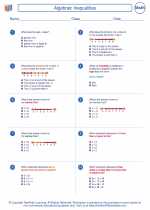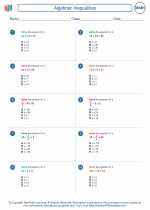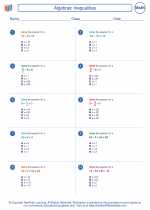Interval Notation Study Guide
What is Interval Notation?
Interval notation is a way to represent a set of real numbers using inequalities. It is often used to describe a range of values or a continuous set of numbers.
Types of Intervals
There are four types of intervals:
- Open Interval: (a, b) - includes all numbers between a and b, but excludes a and b
- Closed Interval: [a, b] - includes all numbers between a and b, including a and b
- Half-Open Interval: (a, b] or [a, b) - includes all numbers between a and b, including one endpoint but not the other
- Unbounded Interval: (-∞, a), (a, ∞), (-∞, ∞) - includes all numbers less than a, greater than a, or all real numbers
How to Write Intervals in Interval Notation
To write an interval in interval notation, use the following format:
- Open Interval: (a, b)
- Closed Interval: [a, b]
- Half-Open Interval: (a, b] or [a, b)
- Unbounded Interval: (-∞, a), (a, ∞), (-∞, ∞)
Examples
Example 1: Represent the set of all real numbers greater than or equal to -3.
Answer: [-3, ∞)
Example 2: Represent the set of all real numbers between -2 and 4, including -2 but not including 4.
Answer: (-2, 4)
Example 3: Represent the set of all real numbers less than 5.
Answer: (-∞, 5)
Practice Questions
1. Represent the set of all real numbers less than or equal to 6.
Answer: (-∞, 6]
2. Represent the set of all real numbers between 2 and 7, including 2 and 7.
Answer: [2, 7]
3. Represent the set of all real numbers greater than -1.
Answer: (-1, ∞)
.◂Math Worksheets and Study Guides Seventh Grade. Algebraic Inequalities

 Worksheet/Answer key
Worksheet/Answer key
 Worksheet/Answer key
Worksheet/Answer key
 Worksheet/Answer key
Worksheet/Answer key
